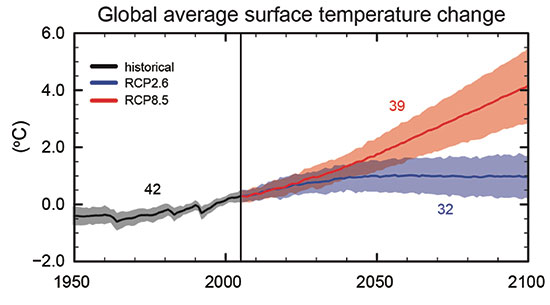Step 3: Select Representative Concentration Pathways
Representative concentration pathways (RCPs) are forcing scenarios used in climate models to generate data about possible future climates.
Due to our inability to predict how the greenhouse gas and aerosol emissions and concentrations in the atmosphere will unfold, a range of RCPs should be considered when developing climate information.
It is recommended that the full range of RCPs (RCP2.6, RCP4.5, RCP6.0 and RCP8.5) are used. If this is not possible, choose a higher and a lower RCP to capture this range for impact assessments.
The global climate implications of the forcing of the scenarios used can be seen in the projected changes in the global mean surface air temperature by 2100 as simulated by global climate models for two emissions scenarios, RCP2.6 (lower) and RCP8.5 (higher) compared to the historical period baseline (1986–2005).

CASE STUDY EXAMPLES



